The goal of the reconstruction was to return Main Street to a more pedestrian-friendly environment with an old town feel. The bricks were removed from underneath the railroad viaduct and new ones were laid to pave upper Main St. This is what it looks like today:
Upper Main Street is commercial and suited for walking by foot. Having walked to upper Main Street from lower Main Street, the trip is all up-hill with a lot more trees and fewer destinations. Upper Main Street is also *much* older than lower Main Street. Here are a few locations:
The last picture is of the former Griggs & Ball building. Run down and virtually abandoned for most of my childhood, the lower two floors were finally refurbished a few years ago and now house a restaurant and coffee shop. The floors above it, however, still appear to be abandoned, but are not as run down as it once was. The block behind the Griggs & Ball building was also home to the Riley Street train station and at least one grain silo, and I believe Griggs & Ball was once an agricultural supplier. Although the building towers above the rest of the town, one of the most iconic buildings of East Aurora is the following:
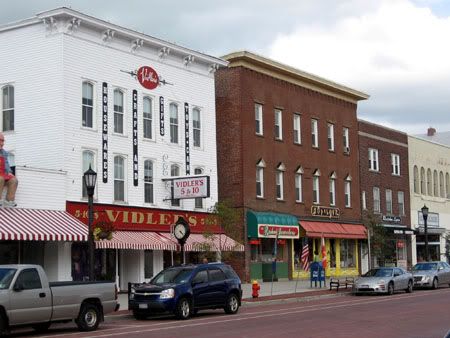
The building on the left is Vidler's Five and Dime, one of the few remaining in America. It actually consists of three buildings, but only the right one is in frame. Many of the buildings, even on the upper Main Street, rent out their upper floors as apartments. My mother lived in one such apartment, and I have known others who have as well. Just the same, I went into Vidler's and spoke to the manager to find out what the second and third floors were used for and just how long they've been used for it. The second floor, he explained, has been rented out as a residence "since forever." Before I could ask how long that was, he went on to explain that the third floor, used for storage now, had been used as a meeting place back during the turn of the century.
The "Vidler on the Roof" is a new addition.
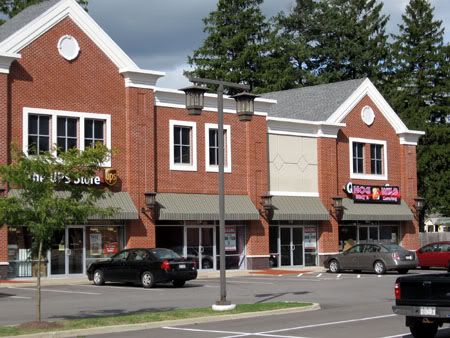
In contrast to the older buildings of upper Main Street, this picture was taken in a plaza next to the traffic circle. The buildings here are only 6 or 7 years old, but emulate the two-story tradition of the rest of the town. As a former employee of the former Quiznos Sub shop (Now Hog BBQ, on the right) I can say that the second floor of this building is most certainly not used for housing or storage. It is accessible only by bringing your own ladder and, even then, was only accessed to service our air conditioner. The second floor is more of a mock-up for a better look from the outside.
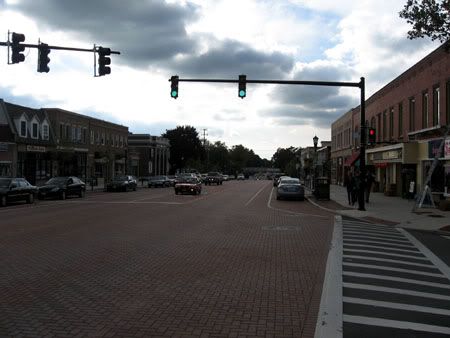
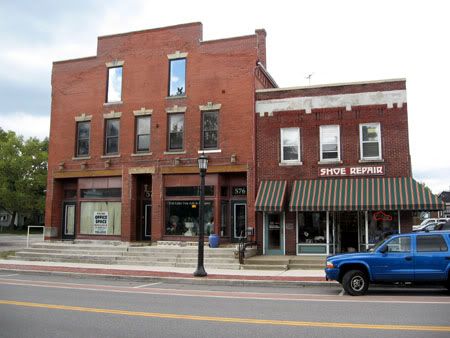
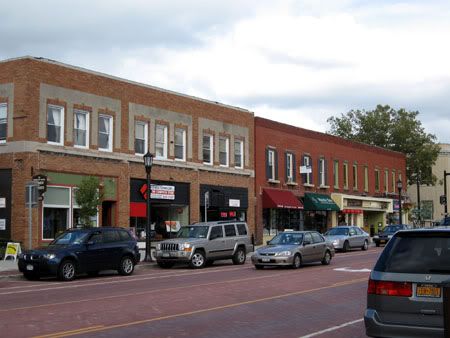
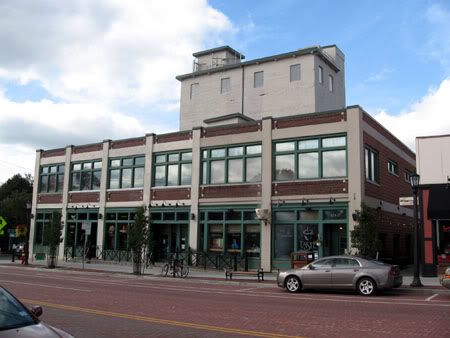
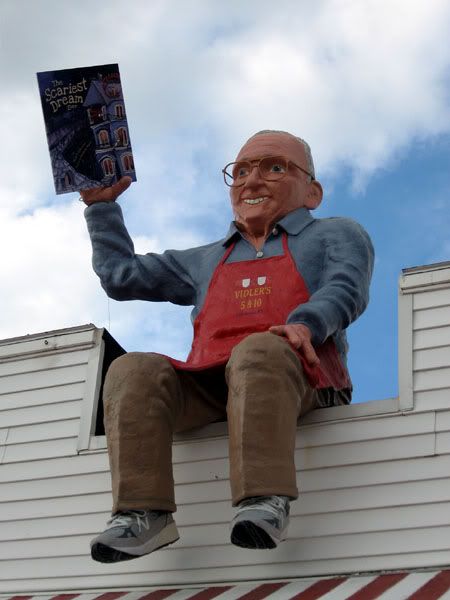
1 comment:
Ah, those second-floor "mock-ups." Probably noone catching a view from there. Makes you think hard about just WHY the Quiznos was built that way. The town zoning board, in a town that is so conscious of its "Main Street USA" image, might even have required it. At any rate, it IS about projecting a particular kind of image or feel, isn't it?
Now you've got me curious about that Vidler's building. Turn-of-the-century meetings, huh? Lots of three-story, main-street buildings were build by men's fraternal organziations or lodges, and often the name of the lodge will be right there in stone on the third floor. Lots of IOOF buidings, for example--Independent Order of Oddfellows--or Masonic symbols for Masonic halls.
Post a Comment